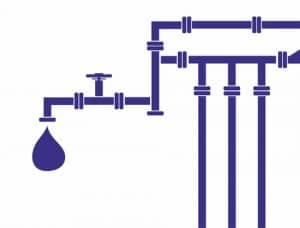Last year, the Aberdeen Group conducted a research study exploring the business impact of building learning capability. Using three key performance criteria to distinguish best-in-class companies, it was found that:
 83% of employees in these companies received performance ratings of ‘exceeds performance expectations’;
83% of employees in these companies received performance ratings of ‘exceeds performance expectations’;- 13% experienced year-over-year improvement to revenue per full-time equivalent; and
- 78% of key roles have one or more ready-and-willing successors.
It’s that last statistic that caught my attention. Best-in-class organizations enjoy a steady stream of talent, being grown and developed in the wings. With this kind of robust pipeline, transitions occur with ease, the negative effect of unexpected occurrences and surprises are mitigated, engagement grows, and high levels of performance can be sustained.
Given the powerful and positive impact of cultivating successors, perhaps it’s time to begin evaluating leadership effectiveness based upon this important job requirement. Rather than subjectively assessing a variety of competencies and other factors, why not look objectively at the most crucial output for which leaders are responsible: the quality of their followers?
Well-intended forms and leadership evaluation processes could be replaced by an assessment of follower readiness to assume his/her next role. A full succession pipeline could lead to ‘exceeds expectations’ ratings and increases. All of this would telegraph the value the organization places upon development… and encourage other leaders to prioritize employee growth.
So, how well-populated is your pipeline? How many of your employees are ready-and-willing successors? How committed are you to their development? A few small steps on a leader’s part can drive disproportionate results. For instance, consider:
- Making sure you are clear about each employee’s snapshot of career success and how that fits into your organization’s structure and future needs.
- Engaging in ongoing dialogue through quick, on-the-spot conversations that keep development front of mind.
- Ensuring that each employee has a least one development plan or activity in process at all times. In today’s environment, if people aren’t growing, they’ll quickly find themselves falling behind.
What would your performance rating be if it was based largely upon having one or more ready-and-willing successors? Elevating your personal rating reverberates through others and the organization as a whole. So maybe it’s time to prioritize our pipelines.
What about you? What are you doing to ensure a steady stream ready talent?



When I was a freshman in college, I got my first “office” job at a company that hired a lot of students in part time positions. We all started at minimum wage, and the way to get raises was to learn how to do other employee’s jobs. It was good for the company; college students’ lives are in such flux with schedule changes, discovering you need to work less because your academic load is heavier than expected, etc., that it worked in the company’s favor to have people ready to step into new positions as needed. And it was good for me, and the other student workers, because it gave us a broader base of experience that looked great on our resumes, and we felt like a team, not a random assembly.
In a later job, I worked with someone who was very protective of her position. She never wanted anyone to know everything she did because she didn’t want to be replaceable. And then something terrible happened; she was seriously injured in an accident. She came to work the day after, and tried to do her job, but she just couldn’t hang in there for more than a couple of hours. Several of us offered to help keep up on her workload while she recovered. She eyed all of us suspiciously, and refused. For several months, she came into the office every morning, but the pain, vertigo, and migraines resulting from the accident sent her home after two or three hours. Against her will, several co-workers and I did what we could to keep up on her projects and tasks. Eventually, she recovered and was able to work full time again. Instead of being grateful, she was irritated with those of us who took on her duties. None of us wanted to steal her job, but she just wouldn’t believe it. Morale was never the same. How different things could have been!
In a different position at another company, I had the pleasure of training a new employee to do a job very similar to my own. It could have been scary! She’s about 20 years younger than I; for all I knew, if I trained her well, I’d be fired because she could do my job for half the pay. Instead, we worked together for three years, until my husband’s career moved us to a new city. I take a lot of ownership in my jobs and the companies I work for; I’m so glad I had the chance to train this young lady because I was able to leave that job with the confidence that the company was in good hands.
I’m so fortunate for the experience I had in college; it shaped the attitude that I take into every job. I’ve never been afraid to teach others about what I do; I’m always curious about other people’s processes; and I never turn down a task because it isn’t my job to do it. I’m a COO now; I can’t think of a better way to prepare for this position than to know the basics of every position. And I can’t think of a better way to sleep well at night than to take time each day to train those under me to be ready to step in, just in case.
Thanks so much, Micki, for sharing your experience and insights. The contrast between your abundant approach and your former boss’s scarcity approach to developing others couldn’t be more stark. I’m so glad (and not surprised) that your generosity and vision have paid off. It’s a great lesson to other leaders!